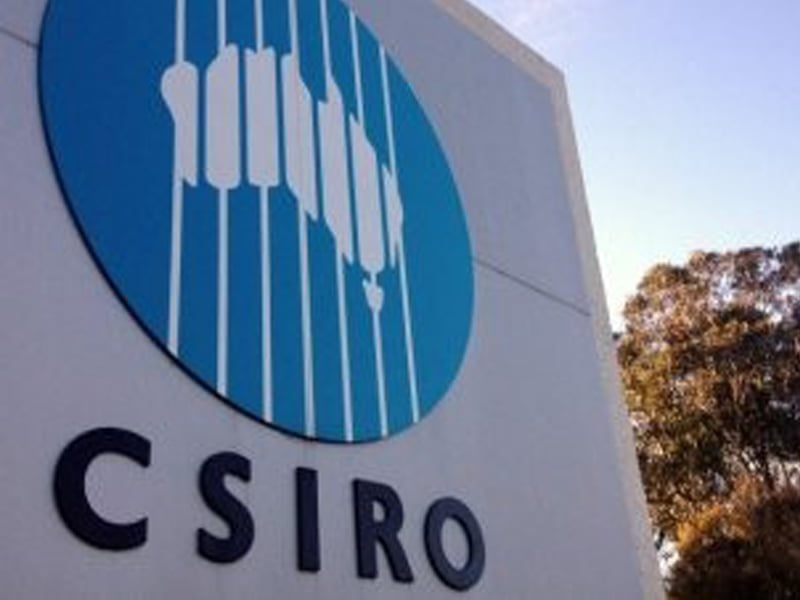Around this time of year, Australia’s government agencies polish up their highlights and tally up their figures for the year to table their Annual Reports, then form an orderly queue for Senate Estimates to dive deeper into the topics of most interest to politicians and Australians.
It’s an important process because taxpayers deserve to know where their money is spent, but for CSIRO, it’s also an opportunity to drive home our purpose – to focus our science and technology on solving the challenges that matter most to 25 million Australians.
It is an opportunity to pause and reflect on how our nation’s burgeoning innovation system is translating science excellence into real-world solutions that make a real impact for people.
At CSIRO, we are constantly asking ourselves how to accurately measure that impact? Creating ten new jobs could be doubling the workforce of a small company, while improving the environmental footprint of another could mean the biodiversity of a whole ecosystem thrives.

Our Annual Report does show that from every $1 invested in CSIRO each year, we deliver $8.4 in environmental, social and economic benefit to the nation.
But it also recognises that this impact isn’t achieved by CSIRO alone. Rather, it is achieved through the efforts of all parts of Australia’s growing innovation system coming together. CSIRO can only succeed as an innovation catalyst if the whole system succeeds.
That’s why we’re pleased to welcome back our ON program this year, working with all Australian universities to help researchers turn their breakthroughs into jobs for Australians.
Since its inception in 2016, ON has created 66 new companies, raised more than $110 million in investment capital and created 510 jobs – ON 2.0 will be twice as good.
If ON had been around when I graduated, I wouldn’t have left Australia for Silicon Valley. It recognises the unique value of science in our economy: tech entrepreneurs are gifted at reinventing business, science is gifted at inventing tech – together science and technology are a wellspring of prosperity that will never run dry.
This year also saw Main Sequence, created to manage the CSIRO Innovation Fund, reach the milestone of more than 42 deep-tech startup investments since its creation in 2017, which have in turn created more than 1200 jobs.
Unlike traditional jobs, these jobs of the future are enabled by science to nonlinearly, often exponentially. These range from telehealth platform Coviu, which saw rapid growth in the early months of the pandemic, to hydrogen battery Endua, which is developing a solution for remote communities to be powered by renewables, both born from CSIRO innovation.
SMEs (small and medium enterprises) are the lifeblood of Australia’s innovation system. I take great pride in CSIRO’s role in supporting SMEs – which are really just startups after the hype – including working with 1600 SMEs in the past year, making up nearly 70 per cent of CSIRO’s industry partners.
We make our IP and research and development capabilities available to early-stage companies that have limited resources, often assigning our IP to the new company in exchange for equity, backing the startup’s success, and helping preserve their precious cash resources, so they are more likely to reach their goals.
As well as partnership with SMEs, our SME Connect program is designed to support companies through funding, expertise and resources.
Last year we facilitated 351 research projects nationally for 319 companies, which injected more than $33 million into the R&D of these projects. Companies like Australian Vanadium Limited in WA, an emerging producer of the metal element vanadium, which is particularly valuable in the manufacturing industry due to its malleable, ductile and corrosion-resistant qualities.
At CSIRO, we are also working with companies of all sizes to help Australia reach its net zero ambitions. As well as investing in breakthrough new renewable technologies, like green hydrogen, CSIRO is forming broad coalitions of partners through our national missions program.
Last month we announced our Towards Net Zero mission, which aims to reduce the emissions of some of Australia’s hardest to abate industries, like agriculture, steel and aviation, by 50 per cent by 2035.
As these industries mobilise to decarbonise, science-enabled technologies are needed to accelerate their transition to net zero, to ensure the sector can significantly contribute to achieving Australia’s commitment under the Paris Agreement.
These industries are also deeply embedded into the fabric of our regions. The transformation of these industries critical to our nation’s future prosperity, and Australian science will ensure no one gets left behind in this enormous transition.
By bringing the system together, working with partners of all sizes across all sectors, CSIRO is an innovation catalyst, accelerating Australia’s innovation performance and solving the challenges that keep Australians up at night.
Larry Marshall is the chief executive officer at the national science agency, the CSIRO. It was announced this week that he will leave this post in 2013 at the end of his third term in the role. Dr Marshall is the longest serving CSIRO chief in the past 50 years,
Do you know more? Contact James Riley via Email.
